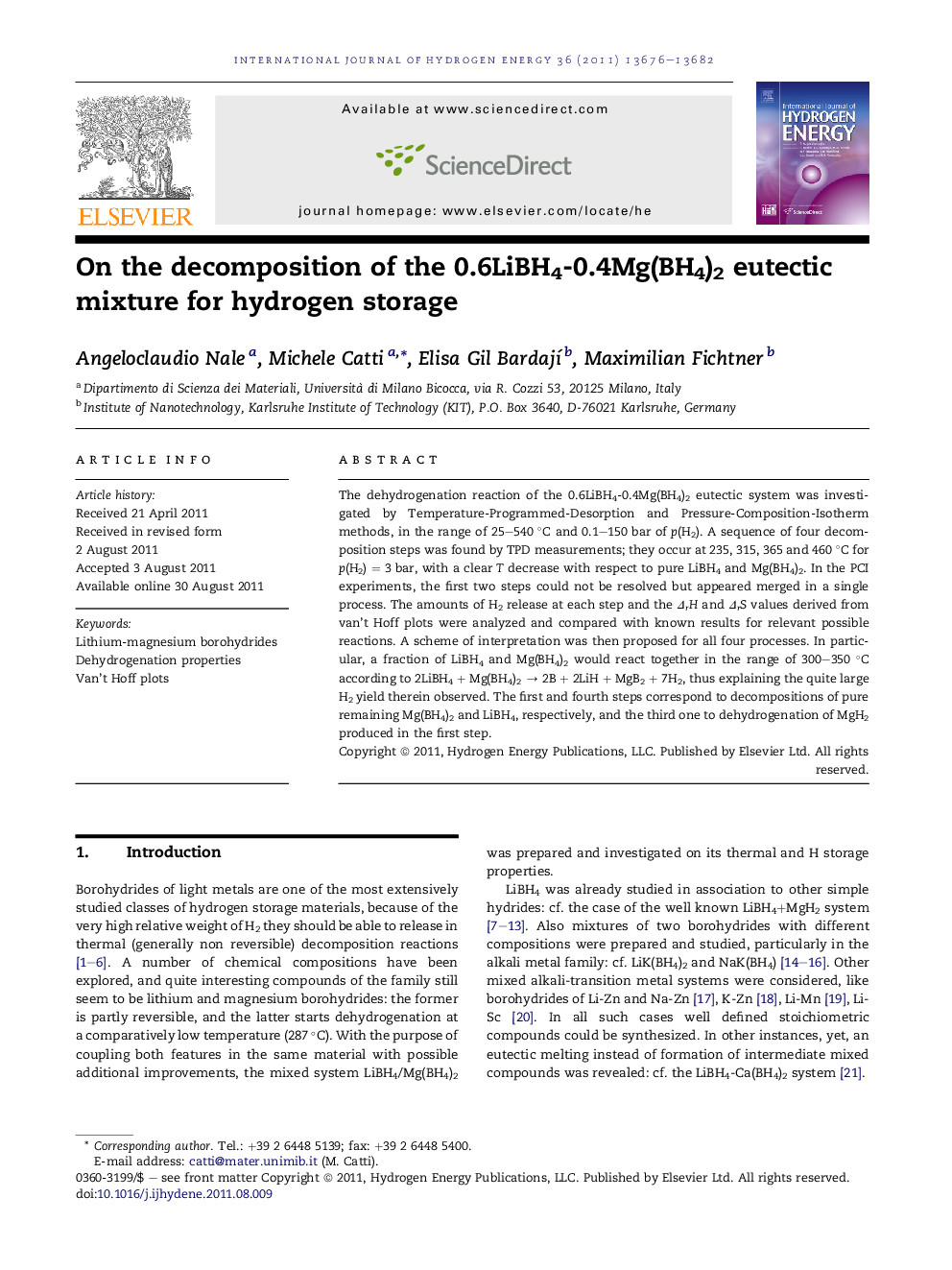| Article ID | Journal | Published Year | Pages | File Type |
|---|---|---|---|---|
| 1278712 | International Journal of Hydrogen Energy | 2011 | 7 Pages |
The dehydrogenation reaction of the 0.6LiBH4-0.4Mg(BH4)2 eutectic system was investigated by Temperature-Programmed-Desorption and Pressure-Composition-Isotherm methods, in the range of 25–540 °C and 0.1–150 bar of p(H2). A sequence of four decomposition steps was found by TPD measurements; they occur at 235, 315, 365 and 460 °C for p(H2) = 3 bar, with a clear T decrease with respect to pure LiBH4 and Mg(BH4)2. In the PCI experiments, the first two steps could not be resolved but appeared merged in a single process. The amounts of H2 release at each step and the ΔrH and ΔrS values derived from van’t Hoff plots were analyzed and compared with known results for relevant possible reactions. A scheme of interpretation was then proposed for all four processes. In particular, a fraction of LiBH4 and Mg(BH4)2 would react together in the range of 300–350 °C according to 2LiBH4 + Mg(BH4)2 → 2B + 2LiH + MgB2 + 7H2, thus explaining the quite large H2 yield therein observed. The first and fourth steps correspond to decompositions of pure remaining Mg(BH4)2 and LiBH4, respectively, and the third one to dehydrogenation of MgH2 produced in the first step.
► We study dehydrogenation of the Li-Mg borohydride eutectic by TPD and PCI methods. ► The H2 release below 400 °C is larger than for the weighted average of end members. ► LiBH4 is shown to partly decompose at unusually low temperature. ► A multi-step reaction model accounts for results from van’t Hoff plots and H2 yields.
